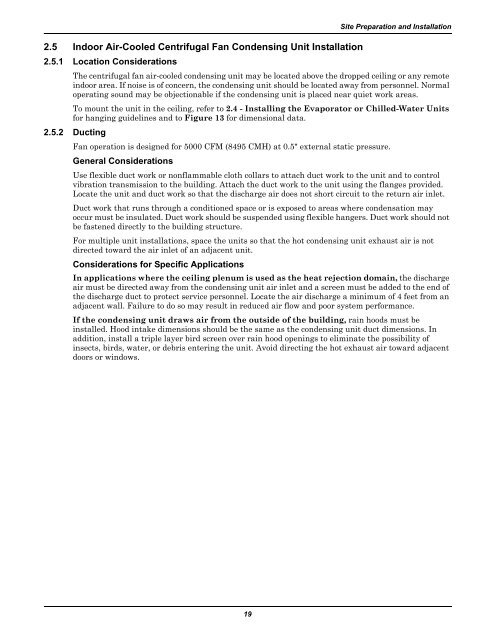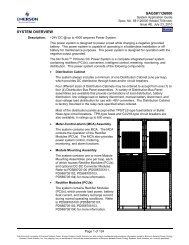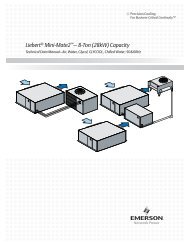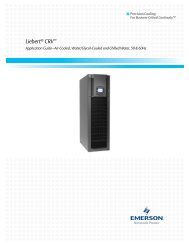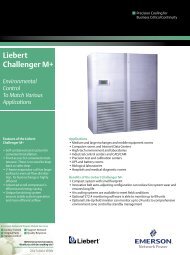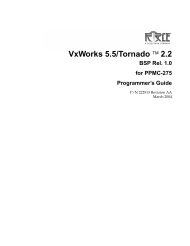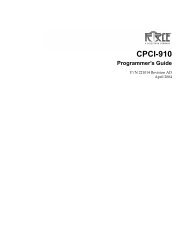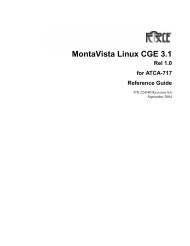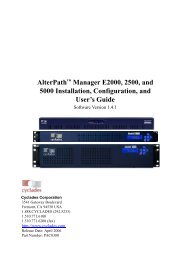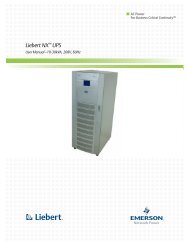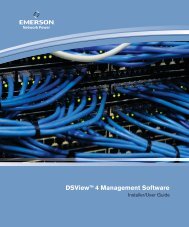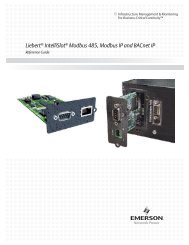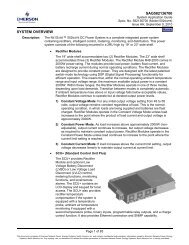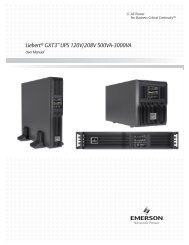Liebert Mini-Mate2, 8 Ton - Emerson Network Power
Liebert Mini-Mate2, 8 Ton - Emerson Network Power
Liebert Mini-Mate2, 8 Ton - Emerson Network Power
Create successful ePaper yourself
Turn your PDF publications into a flip-book with our unique Google optimized e-Paper software.
2.5 Indoor Air-Cooled Centrifugal Fan Condensing Unit Installation<br />
2.5.1 Location Considerations<br />
19<br />
Site Preparation and Installation<br />
The centrifugal fan air-cooled condensing unit may be located above the dropped ceiling or any remote<br />
indoor area. If noise is of concern, the condensing unit should be located away from personnel. Normal<br />
operating sound may be objectionable if the condensing unit is placed near quiet work areas.<br />
To mount the unit in the ceiling, refer to 2.4 - Installing the Evaporator or Chilled-Water Units<br />
for hanging guidelines and to Figure 13 for dimensional data.<br />
2.5.2 Ducting<br />
Fan operation is designed for 5000 CFM (8495 CMH) at 0.5" external static pressure.<br />
General Considerations<br />
Use flexible duct work or nonflammable cloth collars to attach duct work to the unit and to control<br />
vibration transmission to the building. Attach the duct work to the unit using the flanges provided.<br />
Locate the unit and duct work so that the discharge air does not short circuit to the return air inlet.<br />
Duct work that runs through a conditioned space or is exposed to areas where condensation may<br />
occur must be insulated. Duct work should be suspended using flexible hangers. Duct work should not<br />
be fastened directly to the building structure.<br />
For multiple unit installations, space the units so that the hot condensing unit exhaust air is not<br />
directed toward the air inlet of an adjacent unit.<br />
Considerations for Specific Applications<br />
In applications where the ceiling plenum is used as the heat rejection domain, the discharge<br />
air must be directed away from the condensing unit air inlet and a screen must be added to the end of<br />
the discharge duct to protect service personnel. Locate the air discharge a minimum of 4 feet from an<br />
adjacent wall. Failure to do so may result in reduced air flow and poor system performance.<br />
If the condensing unit draws air from the outside of the building, rain hoods must be<br />
installed. Hood intake dimensions should be the same as the condensing unit duct dimensions. In<br />
addition, install a triple layer bird screen over rain hood openings to eliminate the possibility of<br />
insects, birds, water, or debris entering the unit. Avoid directing the hot exhaust air toward adjacent<br />
doors or windows.


